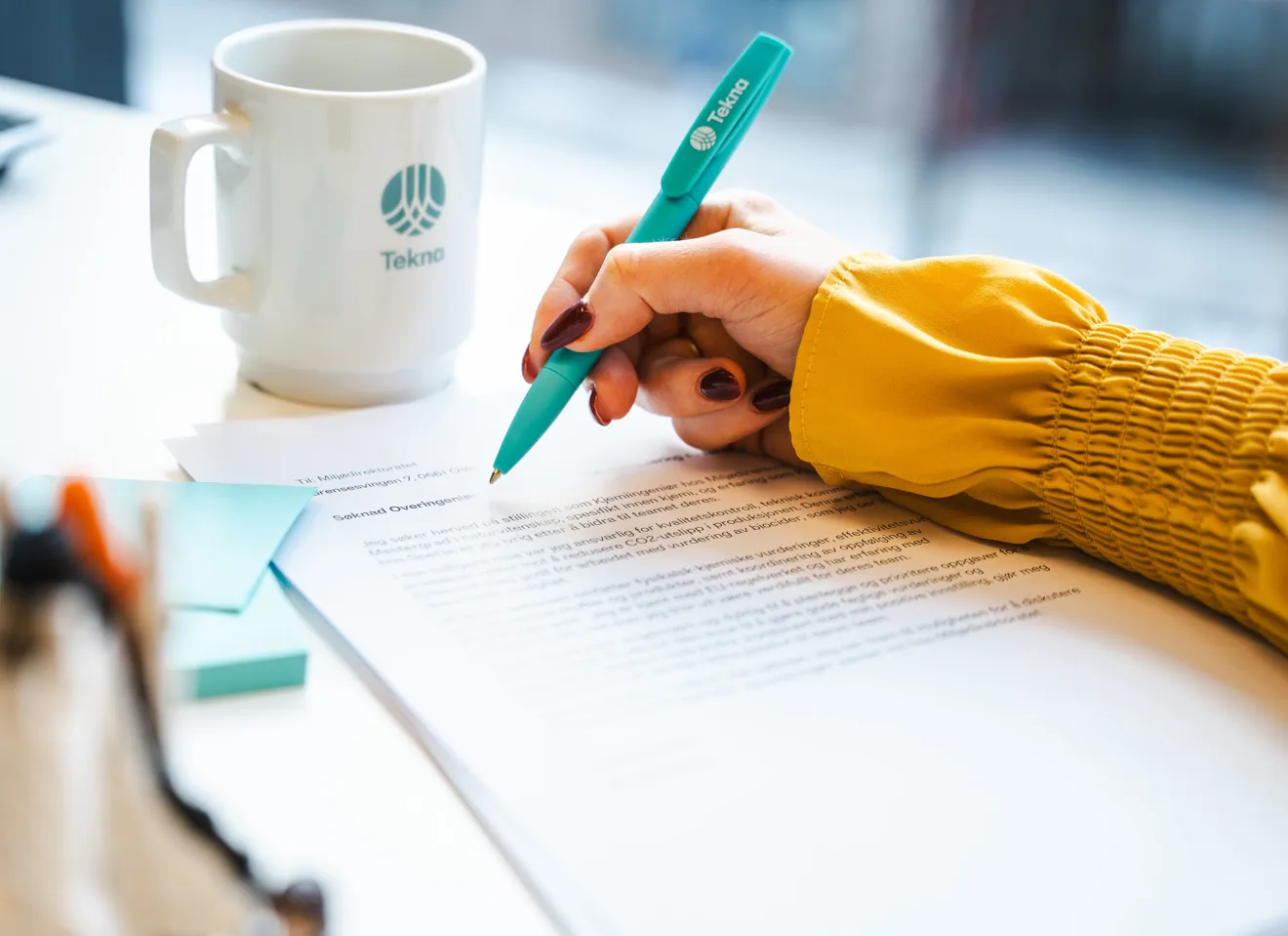
Advice and Tips
Tips on how to write a great cover letter
While it requires a bit of effort, if you want to be called for a job interview, your application has to be relevant and show what you can can do for a company. You have to demonstrate that you can meet an employer’s specific needs. And remember that your cover letter shows your ability to express yourself in writing as well.
Before starting
- Read the job posting carefully before writing your cover letter and analyze what’s written there:
- What kind of information is given about the company itself?
- Make a note of the keywords associated with the position.
- What job tasks need to be performed, and what level of responsibility does the position hold?
- What kind of qualifications is the employer looking for? Remember that there’s a difference between desired qualifications and required ones.
- How can you match your qualifications with the employer’s desired ones?
- Save the job posting because it might be taken down (and you’ll want to have it if you’re called for an interview).
- Your cover letter should be targeted toward whatever the employer’s looking for in the job posting. Copies of former cover letters are often neither targeted nor relevant. Be specific and personal; also, show that you’ve done some research on the company
A CV and cover letter should complement one another – and not be copies of one another.
Which elements must be included in a cover letter?
- Heading
- Who you are (start with your educational background if you’d like and if it’s most relevant), and a brief explanation of why you’re applying for the position (motivation)
- Your competency, work experience and other relevant experience. Keep to what’s relevant and expand on this information. You shouldn’t include everything you’ve ever done here. Start with what you feel is most important with respect to the job you’re applying for.
- Your personal qualities and why you’re suited for this particular position
- Your motivation for applying for the position
Address in the cover letter
If you’re submitting a hard copy or PDF, in addition to the date, it should contain the correct contact information for both the employer and yourself.
Set it up like this:
- Company name
- Name of the contact person for the position
- Address
While your contact information doesn’t need the same format, it should be included in the CV or cover letter.
If you submit your cover letter by email or upload it in an online portal, your contact information can be written under your signature.
A strong opening
Catch your reader’s attention with a sentence that makes them want to keep reading.
Tip: Skip the obvious and go right to important details about who you are and why they need you. Perhaps you can start with a pitch?
Generally speaking, your letter should demonstrate your engagement, experience and results.
Unsure about your CV and cover letter? Tekna can help you!
Are you a Tekna member? If so, you can submit your CV and/or cover letter to us, and we’ll gladly give you feedback and tips for improvement.
How to stand out in a cover letter crowd
Your cover letter should be written in a way that makes the employer want to meet you. So provide enough information to make them curious about you and spark their curiosity to learn even more about you.
A cover letter doesn’t just provide important information about your qualifications and motivation in relation to a position; it also leaves the reader with an impression of how you organize information and present yourself. At the same time, writing this kind of letter gives you a chance to put a personal touch on your application.
Everything in your cover letter should be relevant to the job description
It’s important that the experience, competence and abilities you highlight have direct relevance to the position for which you’re applying: This is because it’s been claimed that hiring managers/recruiters spend an average of 20 seconds reading a first-round cover letter.
It can often be difficult to extract the essence of what you’ve done; use your analysis of the position when giving your reasons as to why they should hire you.
If you want to write an excellent cover letter, it’s a good idea to gather even more information about the position, employer and industry than what appears in the job posting. To do this, go online or call the contact person listed in the ad and ask them a few relevant questions about the job in question.
Justify why you’re interested in and qualified for this particular job
Quite often, a position is advertised because an employer wants to fill a “competency hole” or solve a problem. Your cover letter is a way of showing this employer that hiring you will solve this problem.
An employer is interested in knowing how you can use the competency you have in the job for which you’re applying. Being able to describe what you’ve learned and how you can put this to practical use will significantly increase the overall quality of your cover letter. Emphasize your description of the skills you have that make you especially qualified for the job.
You also need to justify why you’re applying for this particular job; what is it about it that appeals to you? While there are many ways you can do this, one approach is to extract some keywords from the job posting while connecting the position’s content with the interests and values that you think are important.
How to catch the reader’s attention
The clearer and more concrete you are when describing your achievements and results in your cover letter, the better. If you’ve produced positive results, should show examples of your success. Numbers stand out; they catch the reader’s attention while taking up little space.
Your cover letter’s a part of your total sales package, which also includes your CV, references and diplomas (in addition to whatever social media platforms you’re on, for instance LinkedIn). Our experience is that if you write your story in a good way, your cover letter becomes a lot more interesting to read. Try to use a high-level but natural way of writing and be careful not to use clichés. Try as well to avoid long sentences and unnecessarily complicated wording.
Use brief examples
Make your examples as brief as possible, writing a total of three sentences to describe them. Show how you solved a situation, or how you produced results that are relevant for your potential employer.
How to close a cover letter
Your closing should be brief, positive and impactful. This is a natural point for summing up your reasons why you’re applying and why they should hire you.
Signature
Sign your letter by writing «Best regards,» (remember to include a comma), followed by your name. While you can also use «Kind regards,» or «Sincerely,», «Best regards,» is the safest alternative.
If writing a paper letter, remember to sign your name by hand above your typed name.
When uploading your cover letter or submitting it by e-mail, a typed name is sufficient.
Here’s some good advice:
- Start strong
- Write in a future-oriented style and try to show that you can meet the employer’s needs
- Good examples supported by clear results create impact
- Focus on what you can do
- Always check for spelling and writing mistakes
- Don’t use the first person «I» form too much
- Be concise – keep it short and to the point so the reader doesn’t get overwhelmed but will want to meet you to learn more about what you can do for their company
- Cut wherever you can – maximum of one page in length (or between 300 – 350 words divided into three or four short paragraphs)
- Make sure your closing is polite and respectful. Let them know how eager you are to be interviewed, but never make demands.
- If you still haven’t heard anything in two weeks after the application deadline has passed, you can contact the employer and ask how far along they are in the hiring process.
Formatting
- As a general rule a cover letter shouldn’t be more than one page in length
- Choose a neutral font such as: Arial, Calibri, Georgia or Times New Roman
- Font size 10-12 points
- 1-inch margins at the top, bottom and sides (if you’re struggling to try and fit everything on one page, you can try reducing the margins at the top/bottom of the page to ¾ inch)
- Remember to put spaces between your address, salutation, paragraphs, closing and signature
- Align the text to the left side of the page
- If your cover letter’s been submitted in a digital application portal, it’s important that you check on what its format will look like there (and adjust it if necessary)
Are there any places you’d like to work at? You can submit a job application even if the employer hasn’t advertised any available jobs; this is called an open application.
While an open application is similar to a regular application, be clear about why you want to work at that particular place.
Tekna’s career services
Need help writing a good CV and cover letter? Need help with a job interview? Need to have your employment contract reviewed? Tekna provides you with great services if you’re looking for a new job or want to develop your skills at your current one.



